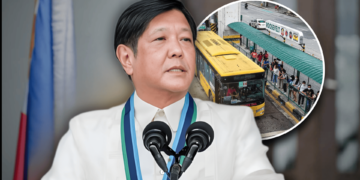Here’s a bitter pill: six out of ten Filipinos die without ever seeing a doctor.
Sixty percent of Filipinos die without ever seeing a doctor. That stat hasn’t changed since 1991, according to the Department of Health. It’s not just a system that’s broken—it’s one people have learned to avoid entirely. So why do most Filipinos only show up when it’s nearly too late?
It’s not just poverty or lack of hospitals. The answer lies in something more invisible and deeply entrenched: a cultural cocktail of pride, fear, and fatalism. A kind of quiet defiance disguised as resilience.
From tiis ganda to kaya pa ‘yan, Filipinos have perfected the art of enduring pain until it becomes unignorable—and sometimes, untreatable.
Filipino pride convinces people to endure pain longer than they should
Let’s start with the cultural script. In Filipino society, enduring pain is a badge of honor. Tiis ganda isn’t just a joke about wearing painful heels—it’s a worldview. Discomfort is seen as something to laugh off, hide, or soldier through.
The result? Filipinos develop a high tolerance for discomfort—physical, emotional, financial. They don’t complain; they cope.
A 2023 health behavior study confirms that many Filipinos delay seeking care because of a belief that they can “still manage it” (kaya pa ‘yan), especially among men who associate seeking medical help with weakness or shame. National Institutes of Health (NIH) points to this hiya-laden stoicism as a major contributor to poor health outcomes.
And it’s not just men. Women, often the caregivers of the family, put everyone else first.
Multiple studies, including one in Health Promotion International, found that Filipino women avoid medical attention not out of ignorance, but out of duty—they don’t want to burden the family with additional costs or time away from caregiving. Oxford Academic paints a vivid picture of this quiet sacrifice.
Preventive care isn’t part of the national imagination
In countries with strong primary care systems, going to the doctor when you’re not sick is normal. In the Philippines, it’s borderline suspicious. If you’re well, why waste money?
This attitude isn’t just cultural; it’s structural. According to a nationwide survey published in 2023, only 40% of Filipinos go for annual checkups. Another 33% wait until they’re already feeling sick. The rest? They check in rarely, if ever. Statista confirms that 4% of Filipinos have never had a routine medical exam in their lives.
The idea that a routine screening could prevent an illness rather than confirm one hasn’t quite taken root. This is especially tragic in diseases like cervical or breast cancer. Over 50% of Filipino women are only diagnosed with breast cancer at stage III or IV—far too late for easy intervention. Cancer Coalition Philippines has been waving red flags about this for years.
Cost is the first excuse, but not the last
Filipinos don’t just delay checkups because they’re expensive. That’s true—a mammogram might cost over ₱1,000, which is a full day’s wage or more for many. But even free services go unused. Why?
Because money is often code for something deeper: prioritization. Many families will spend on school, gas, even a new phone before they budget for a blood test. Preventive health feels like a luxury, not a necessity. That attitude sticks even when the government offers free annual checkups, like those proposed under the Universal Health Care Act. PhilHealth is trying to make these services accessible, but behavior doesn’t change overnight.
Even when checkups are technically affordable, they aren’t logistically accessible. Specialists and well-equipped facilities are heavily concentrated in urban centers, especially Metro Manila. In rural provinces, residents may need to travel hours just to get an ultrasound or lab work. DOH statistics show that doctor-to-patient ratios are still abysmal—roughly 4 doctors per 10,000 people. And that’s being generous.
Delayed care creates deadly outcomes
This isn’t an abstract problem. Filipinos are dying younger, often from diseases that were entirely preventable or manageable if caught earlier. Cancer, diabetes, and heart disease now make up over 68% of all deaths in the country. WHO Philippines has flagged this as a silent epidemic.
And the tragedy compounds. Late-stage diseases are not only harder to treat—they’re far more expensive. Families end up in debt from medical emergencies that could have been avoided with a ₱500 test six months earlier. In many cases, they turn to abuloy, bake sales, or GoFundMe campaigns just to keep a loved one alive. The public health system spends disproportionately more money on catastrophic treatment than on basic prevention.
The most painful part? The cycle repeats itself. Families who watch their loved ones suffer through expensive late-stage illness often do not go for checkups themselves. They associate the clinic with bad news, not prevention.
Famous Filipinos aren’t immune to delayed care either
Even celebrities have fallen into this cultural trap. In 2022, award-winning actress Cherie Gil passed away from endometrial cancer—a diagnosis she kept private until the very end. Her family later revealed she had chosen to battle the disease quietly, avoiding attention. They didn’t confirm whether early treatment might have changed the outcome, but her story reflects a very Filipino instinct: don’t make a fuss. Don’t let the illness define you.
More recently, director and actor Ricky Davao died from a cancer battle that was only publicized in its final stages. They called it a “quiet fight” —a phrase that resonates with so many families who learn too late.
If the rich and famous, with access to top-tier healthcare, still avoid or delay care due to pride, stigma, or fear—what more for the average Filipino?
Changing the story starts with normalizing early visits
This culture won’t shift overnight, but it can shift. Efforts are underway to make preventive care not just available, but familiar. Barangay health workers are bringing screenings to communities. Companies are offering annual physicals. Influencers and vloggers are starting to post about mental health check-ins and wellness tests. Even that tita on Facebook is now sharing her blood sugar results.
Legislation like the Free Annual Medical Check-Up Act could make a massive difference—if paired with education campaigns and accessible logistics. House Bill 9072 proposes to cover lab tests and consultations through PhilHealth, building a baseline culture of prevention.
But the biggest change has to come from the ground up. From families deciding that a check-up is not indulgent. From individuals admitting that strength sometimes means asking for help early. And from a country realizing that kaya pa ‘yan is not a strategy—it’s a slow surrender.
Until then, the cost will keep piling up. And it won’t be just the bill.












